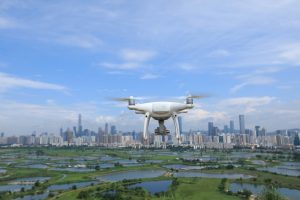Much has been written overseas about China’s sales of armed drones, but we have heard less in the past year about the progress of its delivery drones. Delivery drones help express delivery companies address declining profits, especially the profitability issues associated with last-mile shipments. China has increased the use of delivery drones to resolve the issue of distant rural deliveries as well as high urban demand pressures. Companies like Meituan and JD.com have been making drone deliveries to customers in order to fill demand.
Drones can help to resolve major supply chain issues, particularly last-mile delivery challenges and cargo bottlenecks. Last-mile delivery, the logistics involved in getting products to the customer’s door, is the most expensive aspect of delivery and may account for over half of the transportation costs. This is because this last part of the shipment process usually involves multiple stops.
Last-mile delivery is particularly expensive in China’s countryside, where delivery destinations are far apart and terrain can be difficult to traverse, with mountains and other landforms acting as barriers to order fulfillment. With a growing e-commerce market in rural areas, drones are able to navigate remote areas. Delivery drones fly to rural areas to overcome a lack of logistics transportation.
In urban areas, the use of drones requires special permission due to their low-altitude presence. Even then, excessive traffic in some locations had made drone deliveries more convenient than human delivery.
JD and Meituan have developed drone delivery technologies and processes. JD began drone delivery in 2015, and has since set up a three-level UAV logistics distribution and navigable logistics system for trunk lines, branch lines, and terminals. Trunk line drones can cover 300 kilometers of area to move products from warehouse to warehouse via a large ton-class drone. Branch line drones can transfer smaller batches rapidly between logistics sub-centers, and terminal drones travel to remote areas to solve the last mile delivery problem.
Meituan has had to overcome technical issues, such as programming drones to be fully autonomous rather than remote controls and carrying packages of varying weights. Such issues were addressed by using robust navigation systems and equipping drones with spare powertrain capacity.
Package weight is becoming less of a limiting factor. To increase the weight of goods that can be carried, Chinese companies are expanding the use of cargo drones. China’s first unmanned freighter flight took place last month in Jingmen City, Hubei. The freighter drone can fly a 500 kilogram load up to 500 kilometers. Such freighter drones will move out of the testing phase to become operational in the next decade.
Notably, China’s regulations are amenable to drone operation. The first national standard for express drone delivery service took effect in January 2021. This rule lays out requirements for conditions, procedures, and safety issues for express drone delivery. In addition, drones that are used for commercial purposes, including delivery, must be approved by and registered with the Civil Aviation Administration of China.
Despite everything working in favor of drone delivery in China, the rollout of such operations has not been as fast as some have expected. While drones have comprised one part of the last-mile delivery solution, smaller drones face lower battery lives, lower carrying capacity, and may be interrupted by weather factors. Larger cargo drones may solve these issues. In addition, autonomous vehicles, including delivery robots, have picked up implementation speed in China’s urban areas since they can carry a larger number of packages and hold larger batteries. They are also confined to the ground, and therefore do not face variable high-altitude weather.
Even so, China’s delivery drone technology and implementation is ahead of the United States’. Amazon recently announced its first drone delivery service in Lockeford, California, after it receives regulatory approval. The company has been beset by safety lapses and high turnover in its drone program.
China also surpasses the U.S. in the production of civilian and military drones, which has contributed to the technological and political conflict between the two nations. Outside of commercial delivery service, drone development involves a number of murky issues. Data security, human rights, and political alliances are topics that plague China’s dominance of drone production and sales of military drones.
These issues are not prominent in drone delivery, which has helped to increase logistics efficiency as well as customer satisfaction. As a result, commercial drone delivery in China holds much promise and will continue to develop in the coming years.
An earlier version of this story erroneously said that Meituan was expanding its drone delivery program to operate across all of Shenzhen. The piece has been corrected.

































